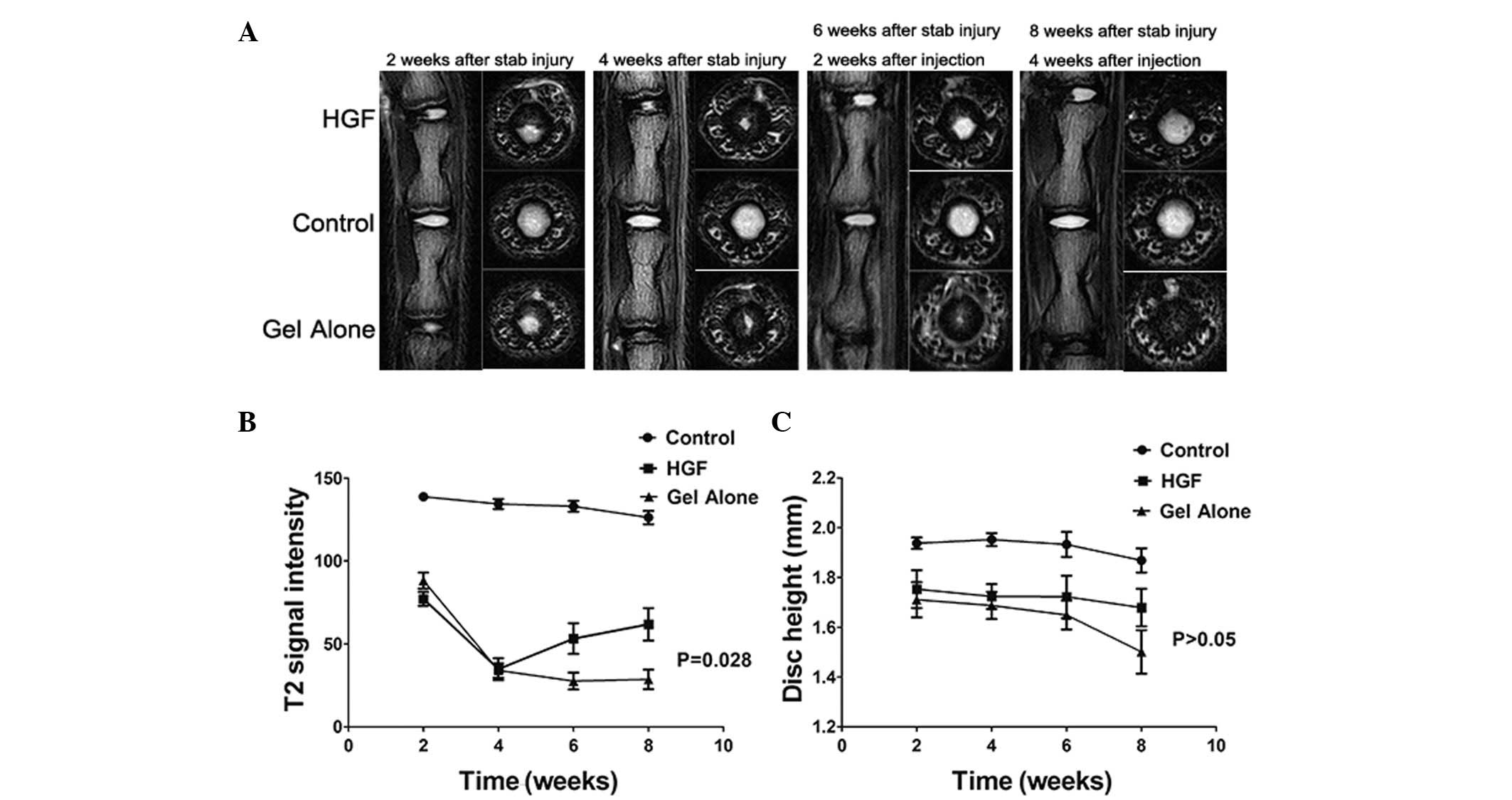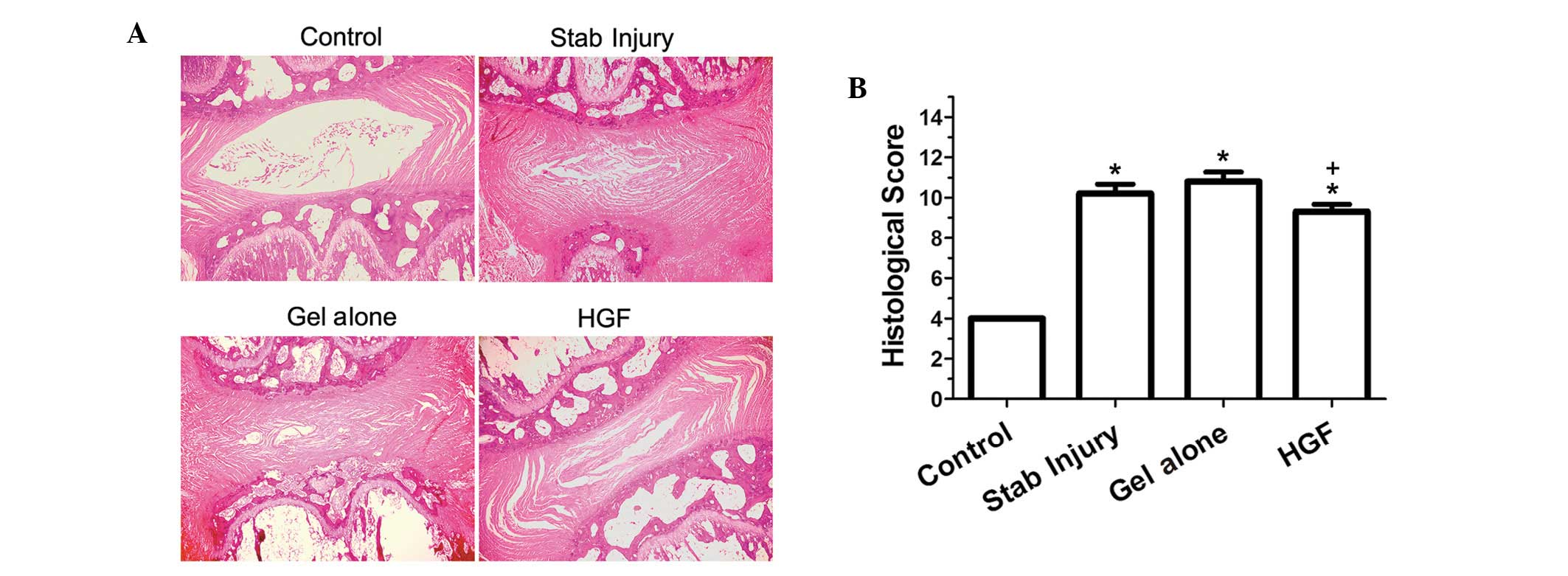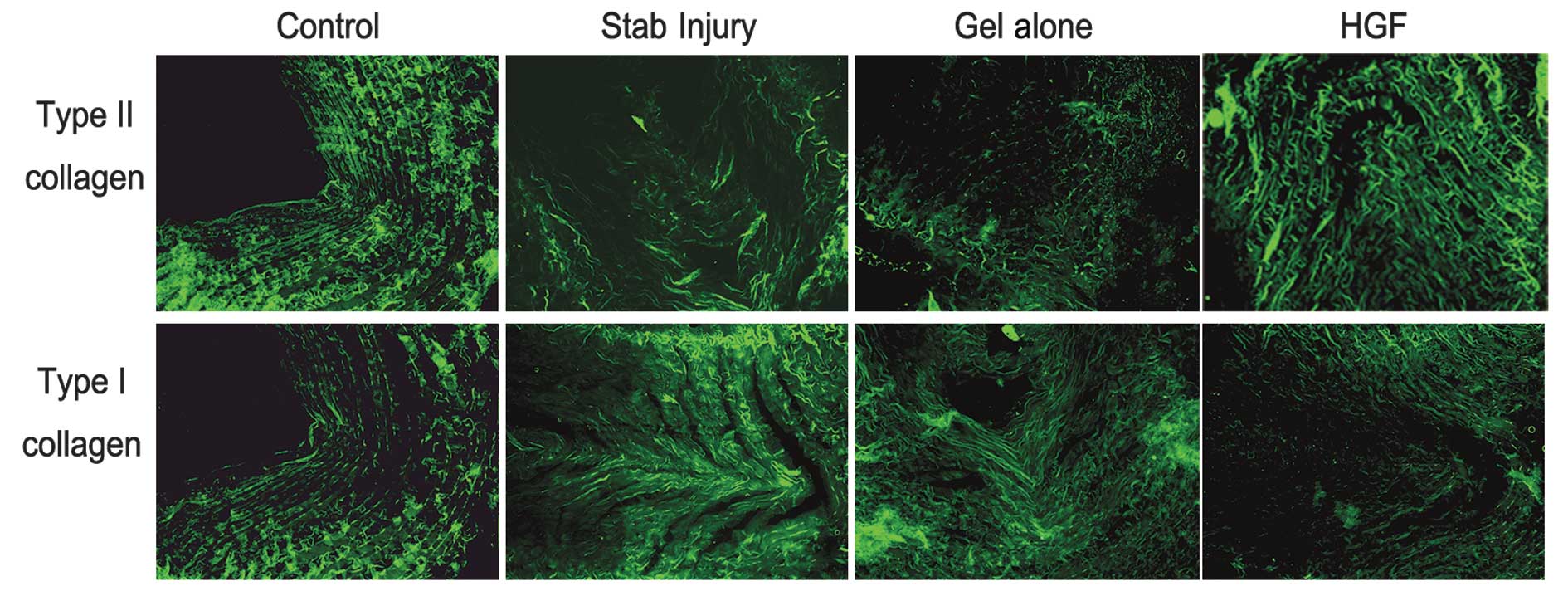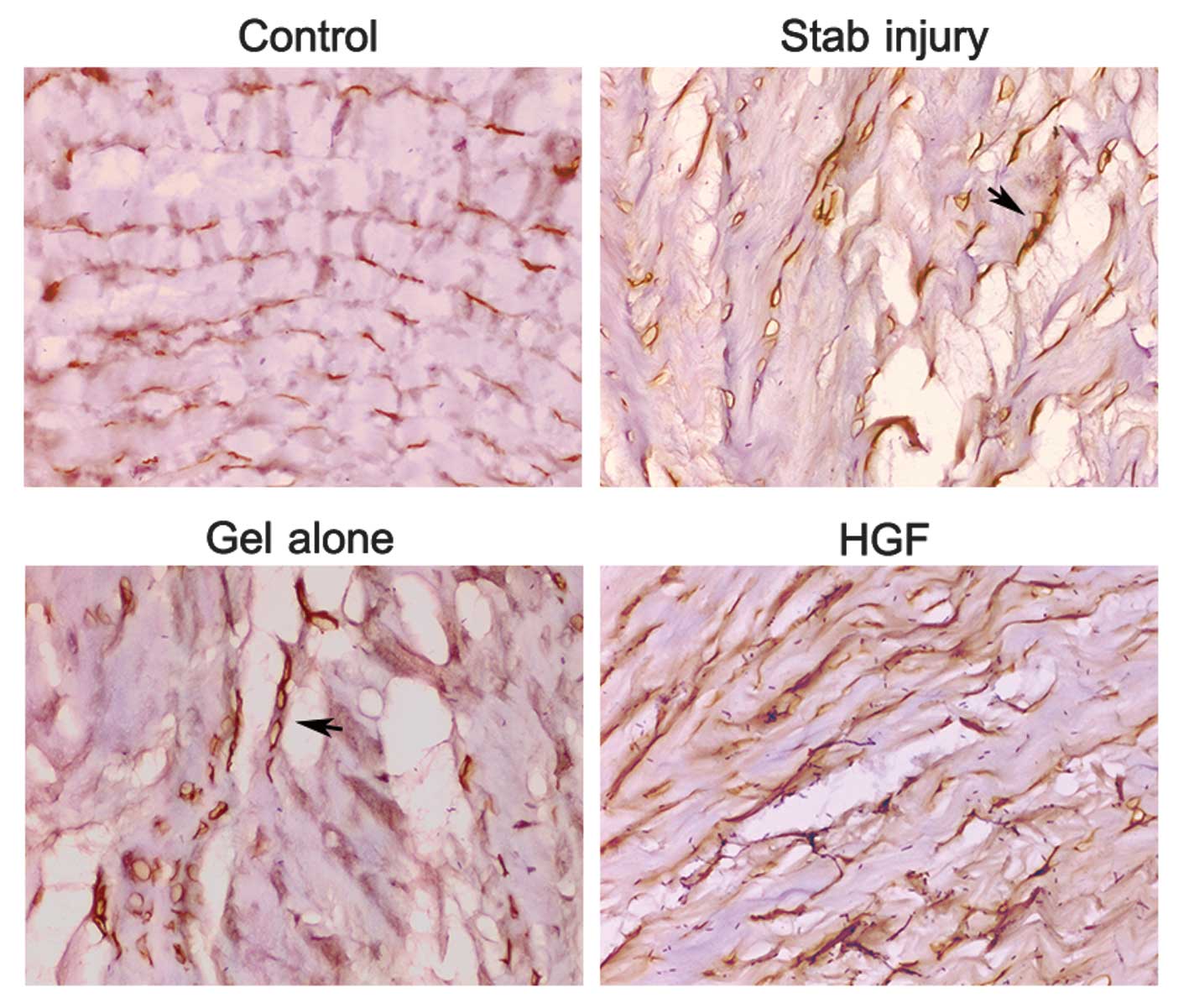|
1
|
Andersson GB: Epidemiological features of
chronic low-back pain. Lancet. 354:581–585. 1999. View Article : Google Scholar : PubMed/NCBI
|
|
2
|
Nerlich AG, Boos N, Wiest I and Aebi M:
Immunolocalization of major interstitial collagen types in human
lumbar intervertebral discs of various ages. Virchows Arch.
432:67–76. 1998. View Article : Google Scholar : PubMed/NCBI
|
|
3
|
Zhao CQ, Wang LM, Jiang LS and Dai LY: The
cell biology of intervertebral disc aging and degeneration. Ageing
Res Rev. 6:247–261. 2007. View Article : Google Scholar : PubMed/NCBI
|
|
4
|
Bernick S, Walker JM and Paule WJ: Age
changes to the anulus fibrosus in human intervertebral discs. Spine
(Phila Pa 1976). 16:520–524. 1991. View Article : Google Scholar : PubMed/NCBI
|
|
5
|
Masuda K, Oegema TR Jr and An HS: Growth
factors and treatment of intervertebral disc degeneration. Spine
(Phila Pa 1976). 29:2757–2769. 2004. View Article : Google Scholar : PubMed/NCBI
|
|
6
|
Matsumoto K and Nakamura T: Hepatocyte
growth factor: molecular structure, roles in liver regeneration,
and other biological functions. Crit Rev Oncog. 3:27–54. 1992.
|
|
7
|
Mizuno S and Nakamura T: Hepatocyte growth
factor: a regenerative drug for acute hepatitis and liver
cirrhosis. Regen Med. 2:161–170. 2007. View Article : Google Scholar : PubMed/NCBI
|
|
8
|
Mizuno S, Matsumoto K and Nakamura T: HGF
as a renotrophic and anti-fibrotic regulator in chronic renal
disease. Front Biosci. 13:7072–7086. 2008. View Article : Google Scholar : PubMed/NCBI
|
|
9
|
Shigematsu H, Yasuda K, Iwai T, et al:
Randomized, double-blind, placebo-controlled clinical trial of
hepatocyte growth factor plasmid for critical limb ischemia. Gene
Ther. 17:1152–1161. 2010. View Article : Google Scholar : PubMed/NCBI
|
|
10
|
Powell RJ, Simons M, Mendelsohn FO, et al:
Results of a double-blind, placebo-controlled study to assess the
safety of intramuscular injection of hepatocyte growth factor
plasmid to improve limb perfusion in patients with critical limb
ischemia. Circulation. 118:58–65. 2008. View Article : Google Scholar
|
|
11
|
Zhang H, La Marca F, Hollister SJ,
Goldstein SA and Lin CY: Developing consistently reproducible
intervertebral disc degeneration at rat caudal spine by using
needle puncture. J Neurosurg Spine. 10:522–530. 2009. View Article : Google Scholar : PubMed/NCBI
|
|
12
|
Hsieh AH, Hwang D, Ryan DA, Freeman AK and
Kim H: Degenerative anular changes induced by puncture are
associated with insufficiency of disc biomechanical function. Spine
(Phila Pa 1976). 34:998–1005. 2009. View Article : Google Scholar : PubMed/NCBI
|
|
13
|
Chen S and Singh J: Controlled release of
growth hormone from thermosensitive triblock copolymer systems: In
vitro and in vivo evaluation. Int J Pharm. 352:58–65. 2008.
View Article : Google Scholar : PubMed/NCBI
|
|
14
|
Jeong JH, Lee JH, Jin ES, Min JK, Jeon SR
and Choi KH: Regeneration of intervertebral discs in a rat disc
degeneration model by implanted adipose-tissue-derived stromal
cells. Acta Neurochir (Wien). 152:1771–1777. 2010. View Article : Google Scholar : PubMed/NCBI
|
|
15
|
Mao HJ, Chen QX, Han B, et al: The effect
of injection volume on disc degeneration in a rat tail model. Spine
(Phila Pa 1976). 36:E1062–E1069. 2011.PubMed/NCBI
|
|
16
|
Masuda K, Aota Y, Muehleman C, et al: A
novel rabbit model of mild, reproducible disc degeneration by an
anulus needle puncture: correlation between the degree of disc
injury and radiological and histological appearances of disc
degeneration. Spine (Phila Pa 1976). 30:5–14. 2005.
|
|
17
|
Roberts N, Gratin C and Whitehouse GH: MRI
analysis of lumbar intervertebral disc height in young and older
populations. J Magn Reson Imaging. 7:880–886. 1997. View Article : Google Scholar : PubMed/NCBI
|
|
18
|
Schiebler ML, Camerino VJ, Fallon MD,
Zlatkin MB, Grenier N and Kressel HY: In vivo and ex vivo magnetic
resonance imaging evaluation of early disc degeneration with
histopathologic correlation. Spine (Phila Pa 1976). 16:635–640.
1991. View Article : Google Scholar : PubMed/NCBI
|
|
19
|
Ruan DK, Xin H, Zhang C, et al:
Experimental intervertebral disc regeneration with
tissue-engineered composite in a canine model. Tissue Engineering
Part A. 16:2381–2389. 2010. View Article : Google Scholar : PubMed/NCBI
|
|
20
|
Sobajima S, Shimer AL, Chadderdon RC, et
al: Quantitative analysis of gene expression in a rabbit model of
intervertebral disc degeneration by real-time polymerase chain
reaction. Spine J. 5:14–23. 2005. View Article : Google Scholar : PubMed/NCBI
|
|
21
|
Sowa G, Vadalà G, Studer R, et al:
Characterization of intervertebral disc aging: longitudinal
analysis of a rabbit model by magnetic resonance imaging,
histology, and gene expression. Spine (Phila Pa 1976).
33:1821–1828. 2008. View Article : Google Scholar : PubMed/NCBI
|
|
22
|
Guehring T, Omlor GW, Lorenz H, et al:
Stimulation of gene expression and loss of anular architecture
caused by experimental disc degeneration - an in vivo animal study.
Spine (Phila Pa 1976). 30:2510–2515. 2005. View Article : Google Scholar : PubMed/NCBI
|
|
23
|
Leckie SK, Bechara BP, Hartman RA, et al:
Injection of AAV2-BMP2 and AAV2-TIMP1 into the nucleus pulposus
slows the course of intervertebral disc degeneration in an in vivo
rabbit model. Spine J. 12:7–20. 2012. View Article : Google Scholar : PubMed/NCBI
|
|
24
|
Li J, Yoon ST and Hutton WC: Effect of
bone morphogenetic protein-2 (BMP-2) on matrix production, other
BMPs, and BMP receptors in rat intervertebral disc cells. J Spinal
Disord Tech. 17:423–428. 2004. View Article : Google Scholar : PubMed/NCBI
|













